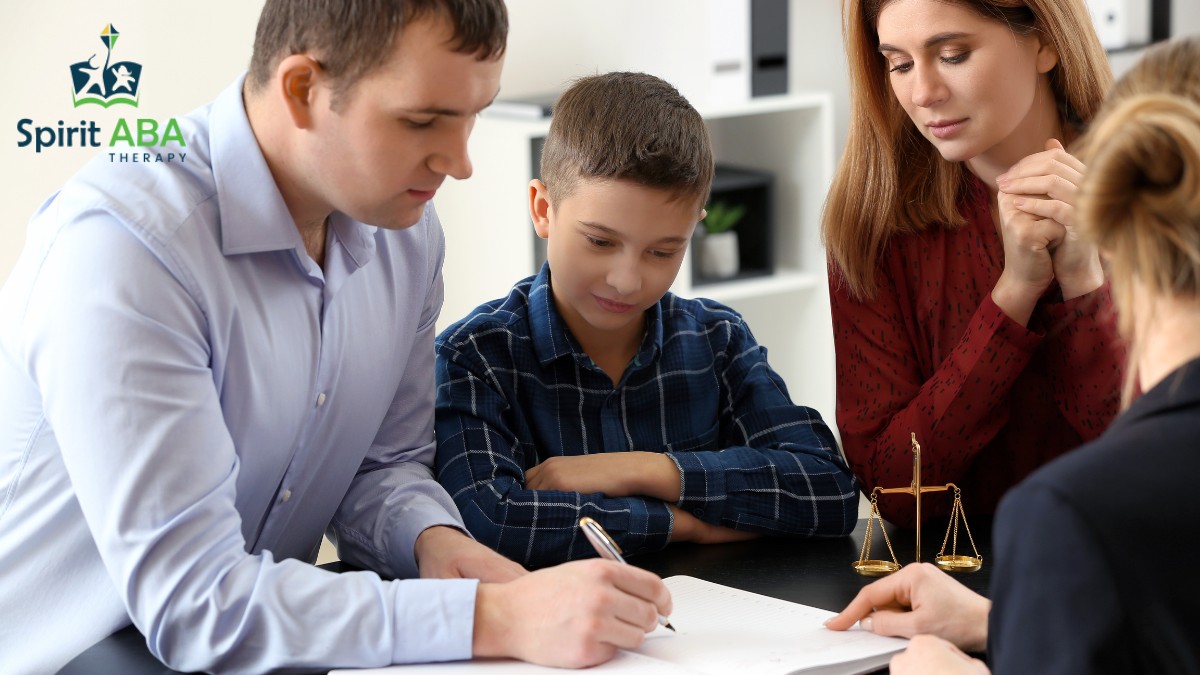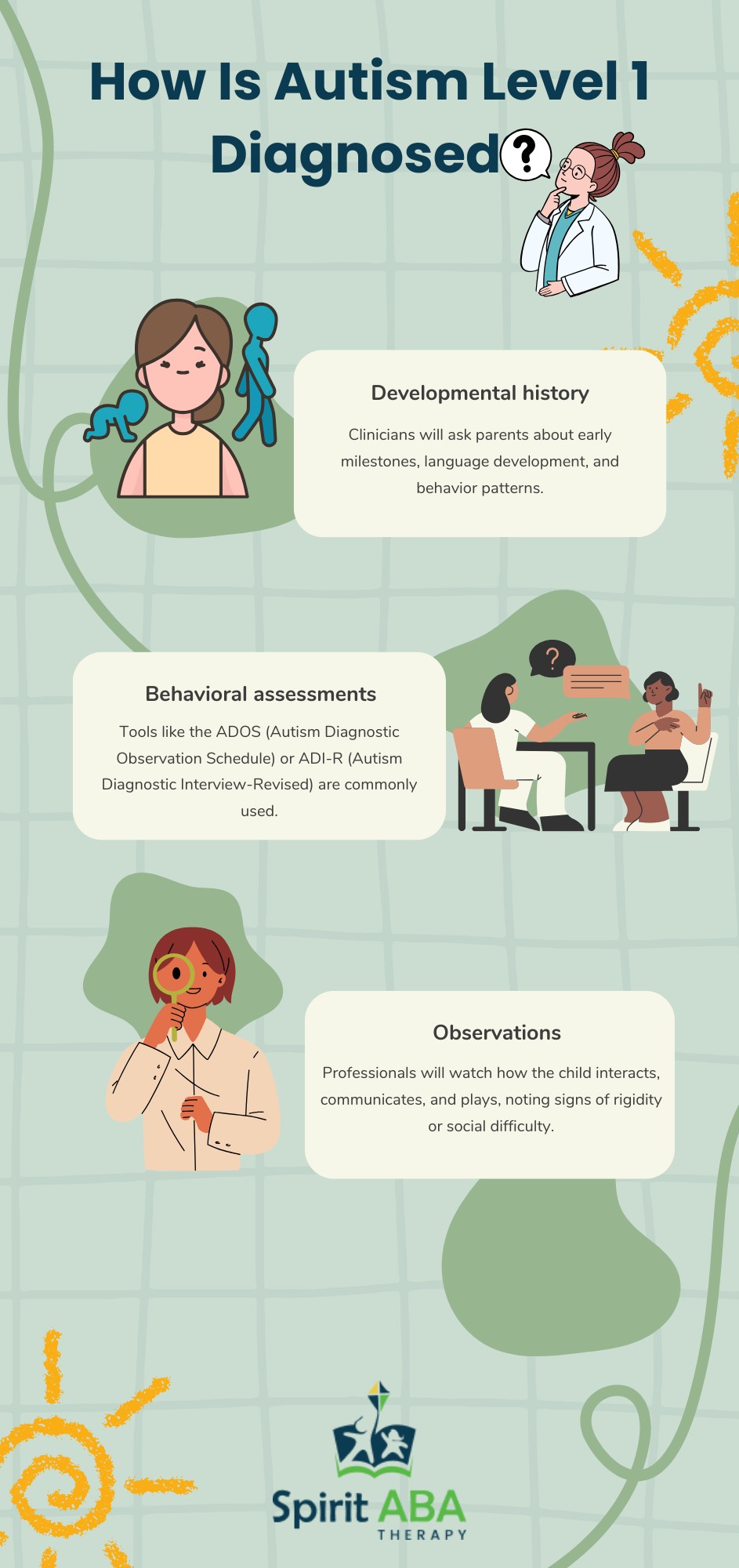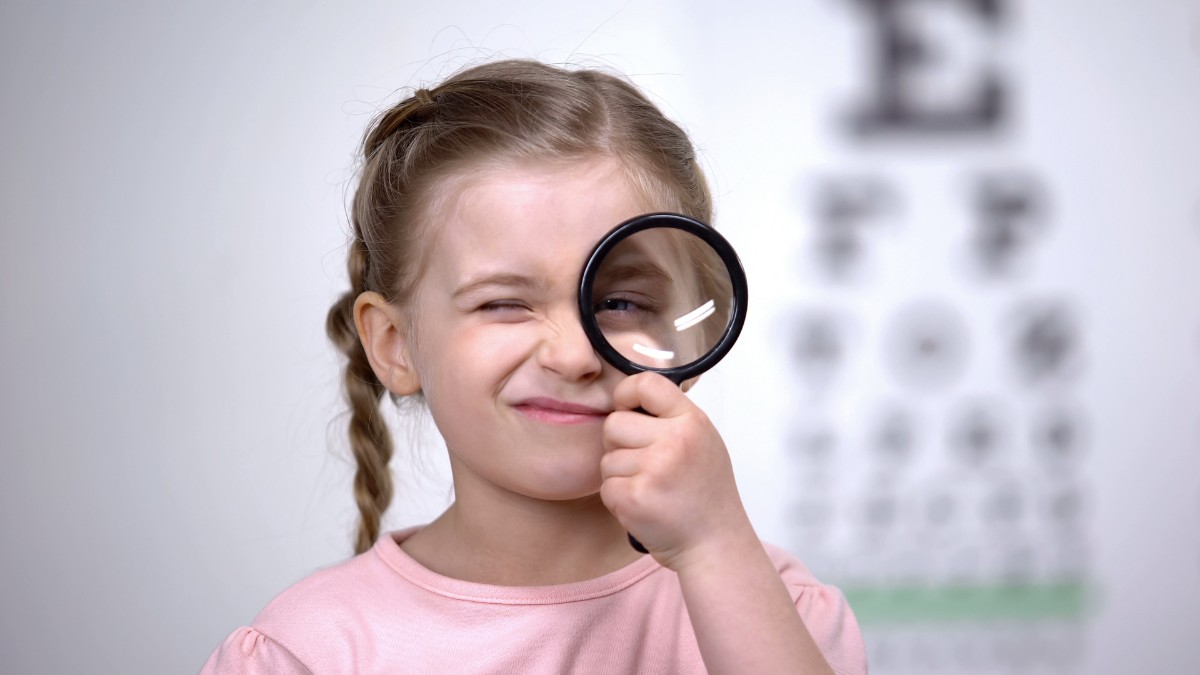Key Points:
- Autism diagnosis level 1 refers to the mildest form of autism spectrum disorder, where individuals require support but can often function independently.
- Common signs include difficulties with social communication, inflexible behavior, and sensory sensitivities.
- Early treatment, especially therapies like ABA, can greatly improve daily functioning and quality of life.
Receiving an autism diagnosis can be a life-changing moment for any family. When that diagnosis is autism level 1, it may bring both relief and uncertainty. Relief in finally having answers, and uncertainty about what it really means, what comes next, and how to best support their kids’ development and well-being.
Is Autism Diagnosis Level 1 Considered Mild?
Yes, autism diagnosis level 1 is generally considered the mildest form of autism spectrum disorder (ASD). But it still comes with challenges. Children and adults at this level often need some support in areas like social communication or adapting to change, but they typically have strong language skills and average or above-average intelligence.
This level of autism used to be referred to as Asperger’s Syndrome or “high-functioning autism.” However, those labels are no longer used in clinical diagnoses. Today, the DSM-5 (the manual used by professionals to diagnose mental health and developmental conditions) classifies autism in levels 1 through 3, with level 1 being the least severe.
 What are the Signs of Autism Level 1?
What are the Signs of Autism Level 1?
Although level 1 autism is often described as “mild,” that doesn’t mean the struggles are insignificant. The signs may be subtle, especially in early childhood, and they often become clearer as social demands increase with age.
Children with autism level 1 may show signs like:
- Difficulty with back-and-forth conversation
- Struggles to pick up on social cues, like tone of voice or facial expressions
- Preference for routines, and distress when they’re disrupted
- Unusual or overly focused interests
- Literal thinking, with trouble understanding jokes or sarcasm
- Sensory sensitivities, such as being overwhelmed by noise, lights, or certain textures
- Tendency to play alone or struggle to form peer relationships
Some children may be academically gifted or very verbal, which can mask underlying challenges with communication or flexibility. It’s not unusual for children with level 1 autism to be diagnosed later in childhood—or even in adolescence—once the social gap between them and their peers becomes more noticeable.
How is Autism Level 1 Diagnosed?
Diagnosing autism diagnosis level 1 typically involves a combination of parent interviews, behavioral observations, and standardized assessments. Since the signs can be subtle, especially in young or highly verbal children, it’s essential to work with professionals who have experience with the full spectrum of autism.
The diagnosis process often includes:

If a child meets the criteria for autism spectrum disorder and requires “support,” but not “substantial” or “very substantial” support, they may be diagnosed with autism level 1.
What Kinds of Support Does a Child With Level 1 Autism Need?
Children with autism diagnosis level 1 typically don’t require full-time assistance, but they do benefit greatly from structured support to help them navigate social interactions, regulate behavior, and develop flexibility.
Here are the areas where support is often needed:
- Social Skills: Learning to read body language, understand emotions, and engage in reciprocal conversation.
- Emotional Regulation: Managing anxiety, frustration, and overstimulation in healthy ways.
- Executive Functioning: Developing routines, organizing tasks, and handling transitions.
- Communication: Using language in socially appropriate ways and understanding unspoken rules.
With the right support early on, many children with autism level 1 grow into independent, successful adults. That’s why identifying the diagnosis and implementing interventions as early as possible is so important.
What Treatments Help Most for Autism Diagnosis Level 1?
There’s no single treatment that works for everyone, but certain therapies have been proven effective for individuals with autism diagnosis level 1. The goal isn’t to “fix” the child but to build skills that help them thrive and connect more confidently with the world around them.
A thoughtful combination of supports is often most effective. Here are the therapies most commonly recommended:
- Applied Behavior Analysis (ABA): Helps teach social, communication, and daily living skills using positive reinforcement.
- Speech and Language Therapy: Useful even for verbal children to work on conversational dynamics and pragmatics.
- Occupational Therapy: Helps address sensory processing issues and build fine motor or self-help skills.
- Social Skills Training: Group or one-on-one coaching to learn how to engage with peers in age-appropriate ways.
- Cognitive Behavioral Therapy (CBT): Especially helpful for older children and teens to manage anxiety and emotional regulation.
Every child’s needs are different. The best approach is to work with a team that understands autism spectrum disorder and can personalize the treatment plan accordingly.
How Parents Can Help at Home
Parents and caregivers play a crucial role in supporting their child’s development. While professional therapy is important, everyday interactions and routines are just as valuable.
Even simple, consistent efforts at home can make a huge difference. Try focusing on:
- Predictable Routines: Consistency helps reduce anxiety and build independence.
- Visual Schedules: Great for transitions and setting expectations.
- Practice Social Scripts: Role-play situations like greetings, asking for help, or making friends.
- Offer Choices: Helps reduce power struggles and gives the child a sense of control.
- Celebrate Small Wins: Every bit of progress matters. Encouragement builds confidence and motivation.
Patience is key. Children with autism level 1 may take longer to grasp certain social or emotional concepts, but with time and support, they can and do make meaningful progress.
A Look Toward the Future
An autism diagnosis level 1 isn’t a prediction of limitation—it’s a guide for understanding and supporting a child’s unique needs. Many individuals with this diagnosis lead fulfilling, independent lives. The key is early intervention, ongoing support, and a strengths-based approach that empowers the child and respects who they are.
Families who stay proactive, ask questions, and stay involved in their child’s treatment often see the most positive outcomes. While every journey looks different, the destination is the same: helping each child reach their full potential. If you’re looking for practical ways to support that progress—especially during challenging moments—our article How to Help Autistic Kids with Transitions Between Activities offers helpful strategies. And for those navigating the diagnostic process, our article Gold Standard Autism Assessment: ADOS and ADI-R Tests Explained breaks down the key tools professionals use to ensure accurate evaluation.
Get Started With Support From Spirit ABA
Navigating an autism diagnosis level 1 doesn’t have to be overwhelming. Spirit ABA is here to walk alongside families every step of the way, offering compassionate, personalized support through ABA therapy in Nebraska, Colorado, and Iowa.
Our therapy programs are designed to meet children where they are and help them grow in the areas that matter most—whether that’s communication, social interaction, behavior regulation, or daily life skills. We believe in partnering closely with families to create progress that lasts.
If your child has been diagnosed with autism or is showing early signs, reach out to us today. Let’s build the support system your family needs—together.


